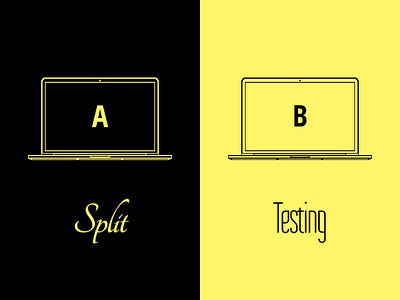QA teams find themselves torn between the demands of the Devs and Ops teams. On one side, developers want to release features fast and have minimal testing. On the other side, Ops teams want those features to be tested and proven reliable before release. The best way for QA teams to walk this balance is to increase their value in the software development cycle. They can do this by leveraging the best of the modern QA testing tools available today. That’s precisely what we cover in this post. Three innovative startups that are delivering cutting-edge solutions that every QA professional needs in their arsenal. All these startups have recently received funding and are on a path of high growth right now.
1. Split: Feature flags as a service

Split does, well, split testing. In other words, it allows software teams to split test two versions of an application and launch a feature only when confident. This process is called feature flagging, whereby software teams can keep a particular feature change dark until the feature is fully built, tested, and ready for launch to the full list of end-users.
Split is installed as an SDK in the application. From here, it can control the launch of any feature within the application. Split provides a management console from which teams can view and change any feature that is in test. Split also includes a kill switch to shut down a feature in seconds if it isn’t working as expected in production.
Under the hood, Split runs if-else statements and maintains whitelists to give teams greater control over how a rollout should happen. You can deploy to a handful of users or to all users in a particular geographic region. Split calls a group of users as a segment. Features are deployed to segments.
Split has fine-tuned the process of A/B testing, enabling teams to view the impact of features on business outcomes. For example, teams can view the impact a particular feature has on page load time, its impact on the onboarding process, or how it reflects in a customer survey. All this is real-world feedback that is essential to building a great customer experience.
Split also includes detailed analytics on every feature released. It shows the number of clicks, impressions, and more that a particular feature gets. It also includes an API that enables integration with other tools teams may use in the QA or Ops processes.
Split’s big idea is that it enables faster, low-risk deployments keeping with the continuous delivery model. It enables DevOps teams to refine features fast and drive value. This is a tremendous value for QA teams whose performance is rated largely by the reliability of new features released. Split takes the risk out of releases and gives teams confidence to release faster.
Split has recently raised $33 million in Series C funding and is looking to improve its product offering. It is a great tool to have in the toolbox of any QA professional.
2. Pcysys: Penetration testing without humans
Pcysys (short for Proactive Cyber Systems) is an Israeli startup that specializes in penetration testing. Now, penetration testing is primarily an ethical hacking initiative where an organization plans attacks on its own systems that mimic an external hacker’s attack. In doing so, it looks to uncover existing vulnerabilities and fix them. However, the problem is that penetration testing is usually performed as a one-time best practice and then completely forgotten. It’s hard to find great ethical hackers, and harder to keep them on the payroll for continuous penetration testing. This is the problem that Pcysys is out to solve.
Pcysys provides remote, automated penetration testing that is done, not by humans, but by software. The benefit of this is that it can be done continuously every week, or every day as needed, and it doesn’t require any effort on the part of the organization whose systems are being tested. Pcysys discovers all vulnerabilities and lists them in order or priority.
Pcysys goes to great lengths to mimic an attacker’s behavior by ensuring its tests are agent-less and conducted without installing any scripts. It gives you a true view from the outside. Pcysys does numerous checks and tests such as sniffing, target DoS, password cracking, ethical malware injection, and privilege escalation.
Applicable to QA teams and SecOps teams, Pcysys is a powerful tool that can uncover critical vulnerabilities in 15 minutes. The best part is that it is completely hands-off, requiring no effort on the part of the customer organization.
Pcysys has just received $25 million in Series B funding and is all set to make organizations more secure.
3. Transposit: The last mile in incident management
This next tool in our list would fit snugly in the arsenal of an SRE engineer or the Ops team, but I’ve included Transposit here as it really completes the cycle for QA teams as well.
Despite all the testing a QA team can do, incidents are bound to occur. That’s when you need a process that is not bloated with information overload, but that is lean and makes the most of the systems and people resources at hand. That’s exactly what Transposit does. It aligns systems and people as they respond to incidents. You can think of it as the last mile for incident management.
Transposit focuses on interactive runbooks that facilitate quicker recovery for applications. It is a SaaS product that houses all runbooks available and integrates deeply with Slack to foster communication between teams. In fact, its integration with Slack is so well-designed that users can take action directly and resolve certain issues from within Slack. This brings a lot of speed to incident response and is priceless when combating outages.
Being in the crowded monitoring space, you’d think that Transposit competes with larger providers like Splunk, Pagerduty, or Datadog. However, Transposit is big on integrations, integrating with pretty much any tool in your stack. By integrating with these tools, Transposit adds value on top of them, and even gets more out of your investment in these tools.
Transposit is all about making incident actionable. It saves the best for last as it delivers self-documenting post-mortems. While that can be a mouthful, it is essentially a completely automated, event-by-event view of what really happened and competes with real context. Yes, Transposit generates this report for you automatically after every incident. Nobody likes writing a post-mortem report, so a feature like this shows the team’s deep understanding of SRE and Ops teams’ needs.
Transposit has just raised $35 million in Series B investment and will make on-call duty suck less.
These QA testing tools push the boundaries
While the challenges of releasing performant and reliable applications are many, many powerful solutions help with this effort. The three QA testing tools mentioned here are frontrunners in their space. They are pushing the boundaries on what is possible when it comes to building QA into application delivery. Whether it’s to release features with split testing, perform penetration testing like a pro, or handle an incident with the finesse of “The Wolf” from “Pulp Fiction,” these tools have the power to make any QA professional look great and release even greater applications.
Featured Image Source: Designed by Stories / Freepik




